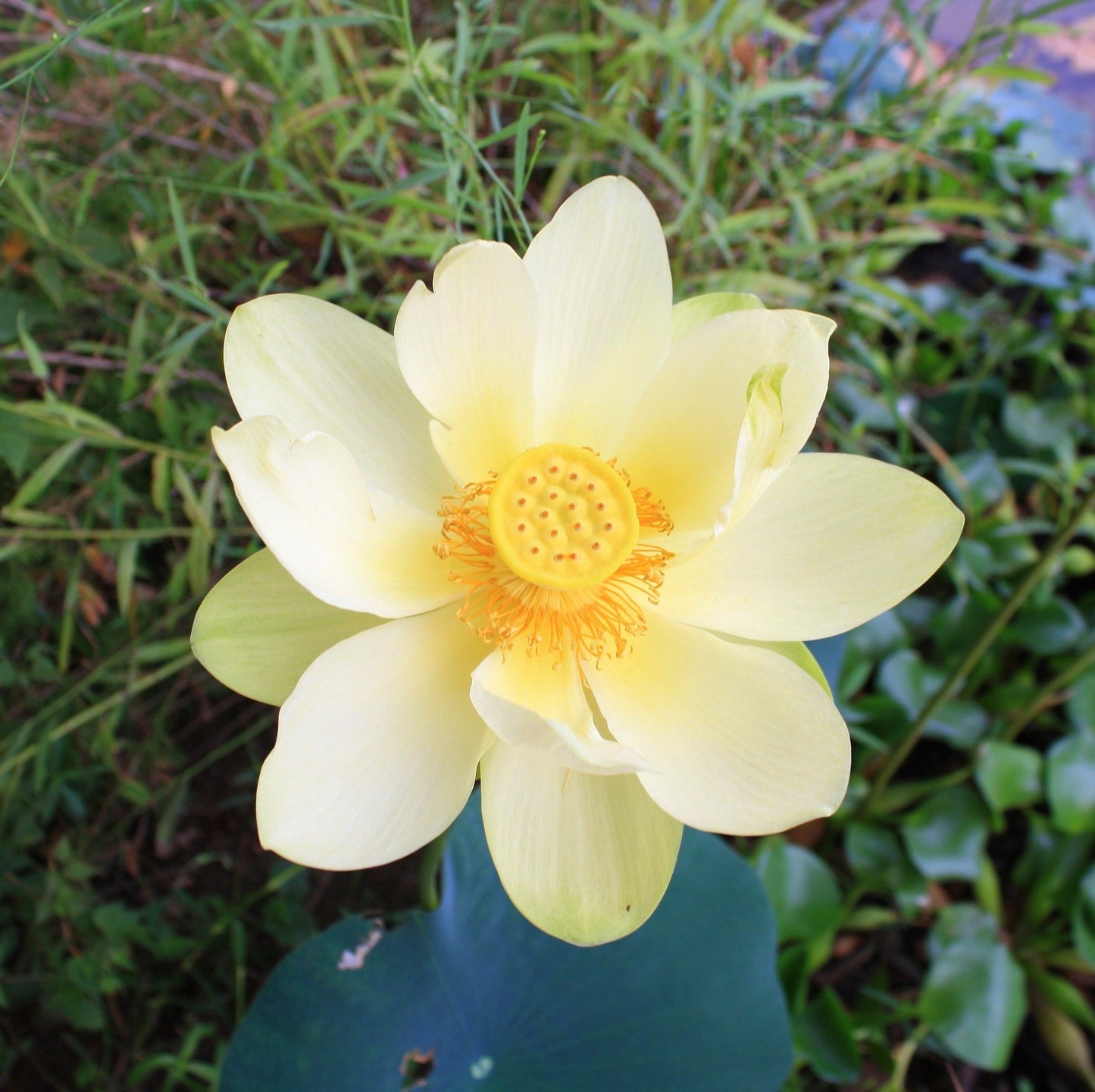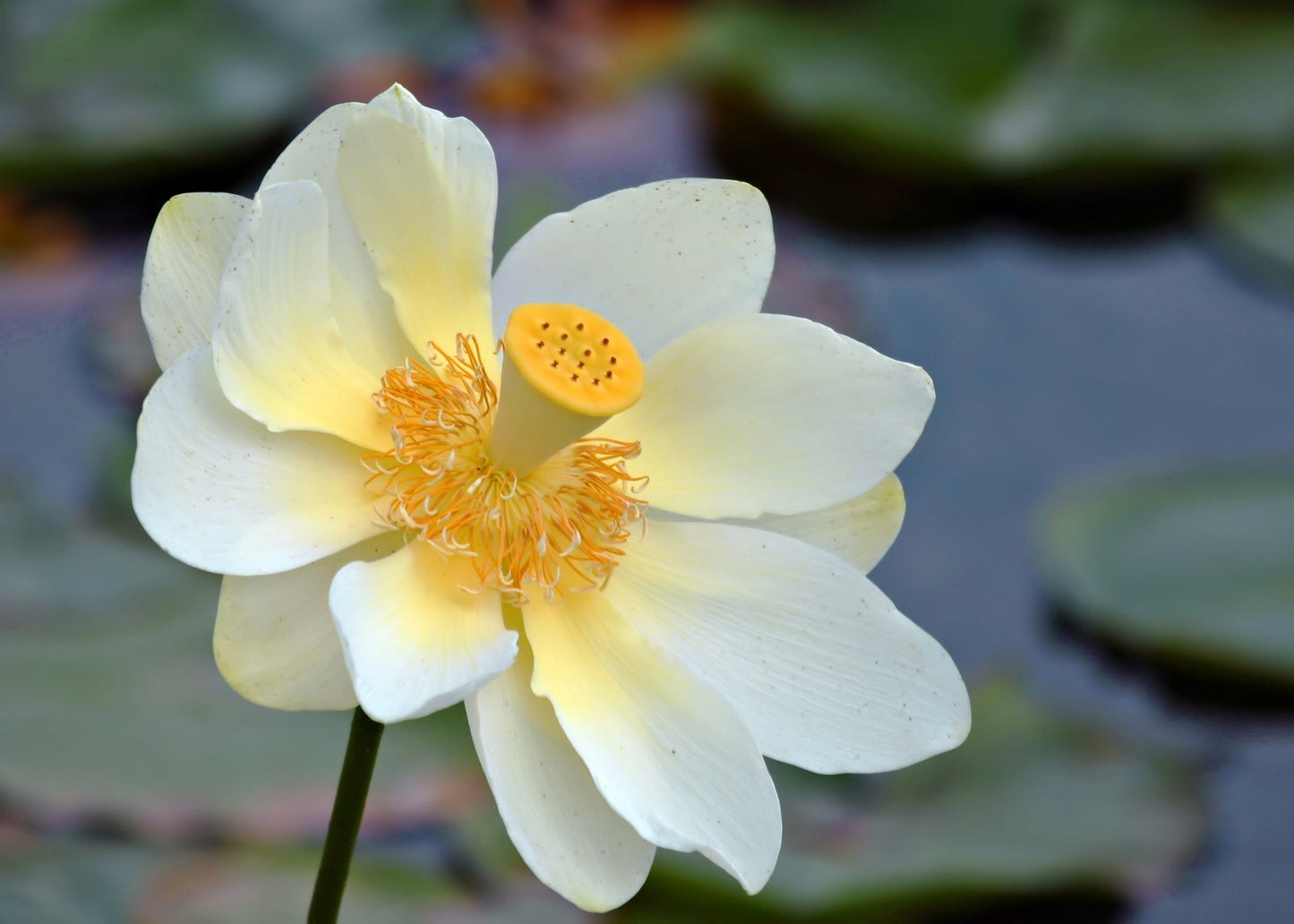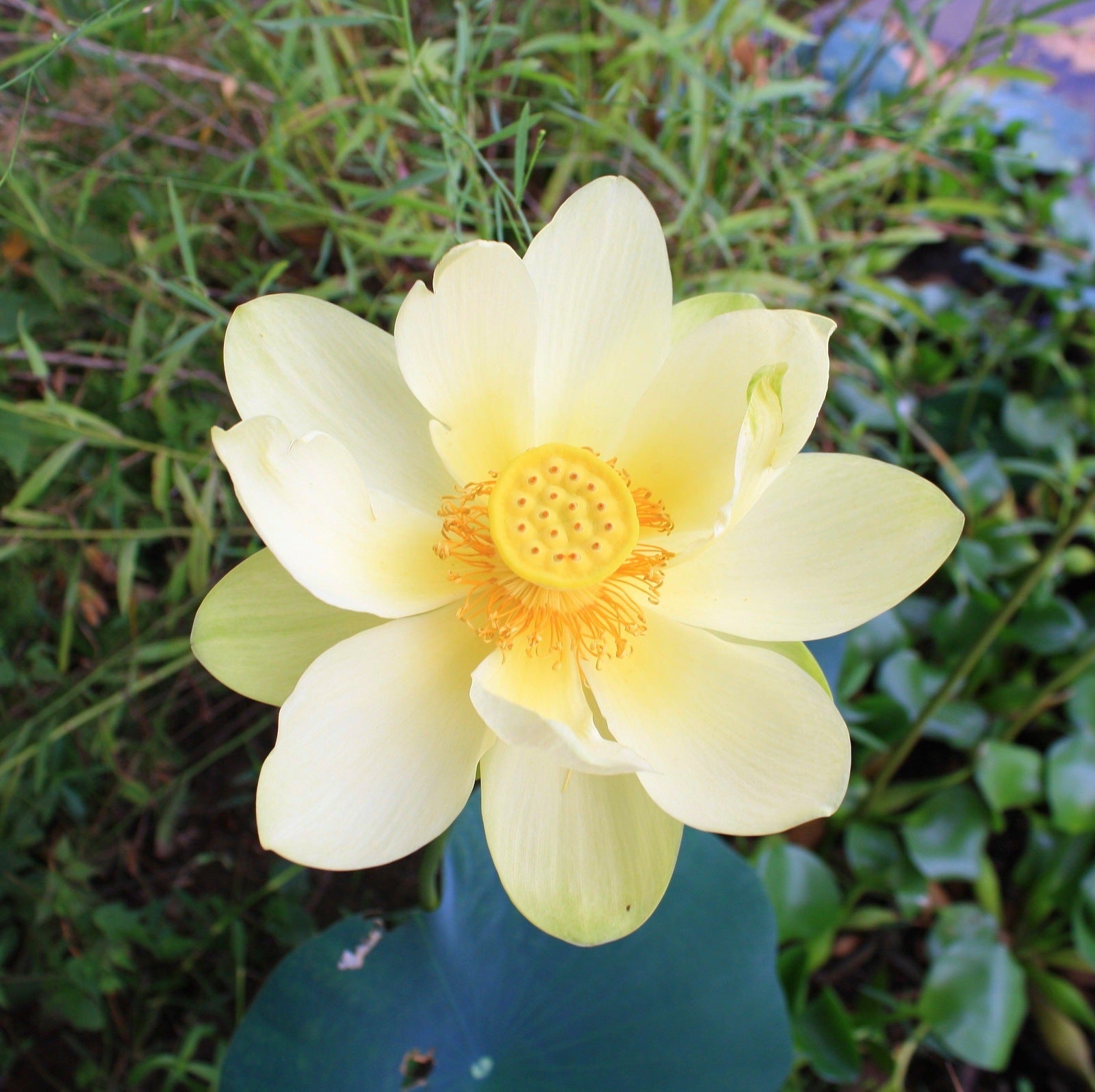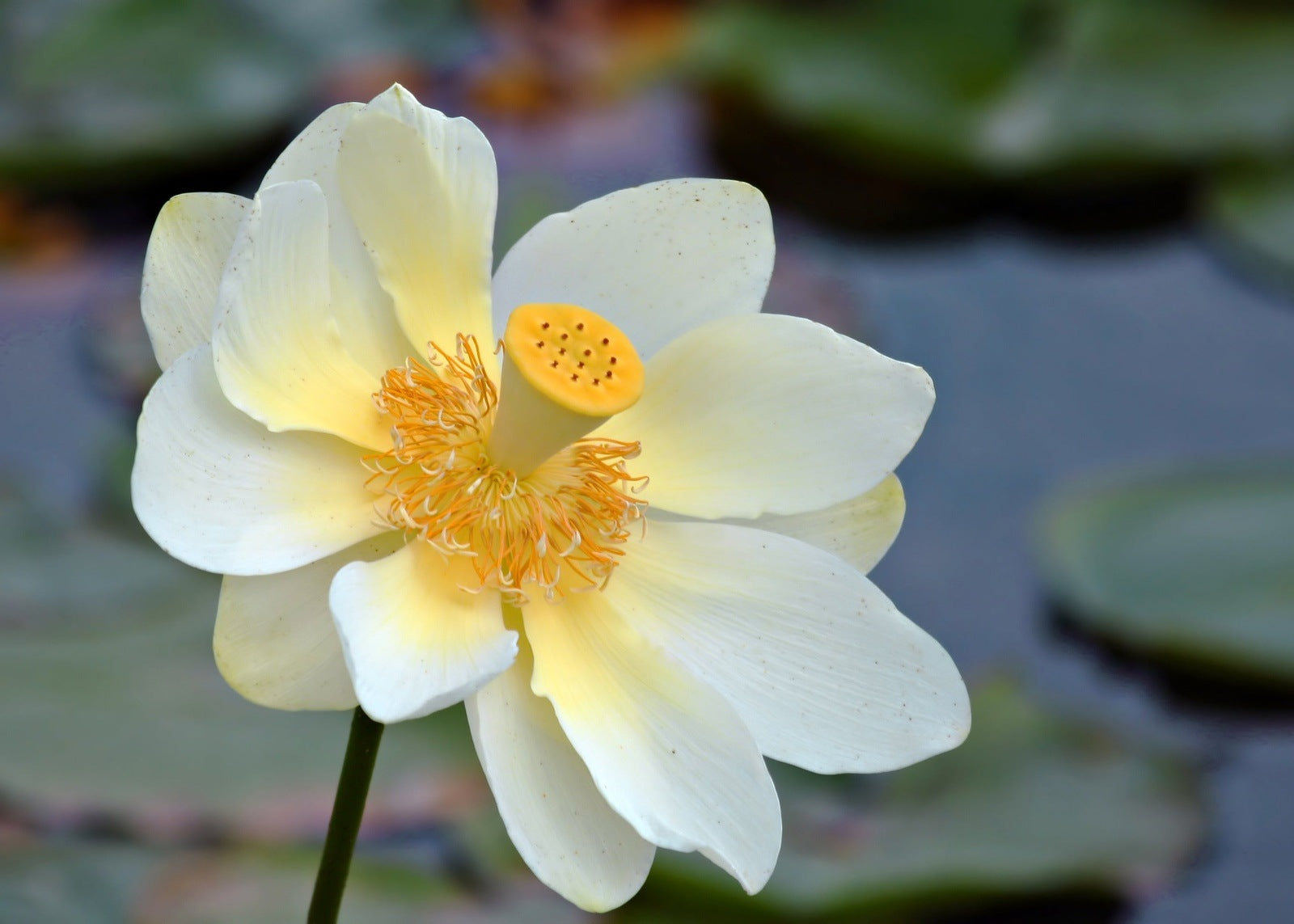

Nelumbo lutea
Enormous tropical-looking, white flowers stand tall above the water with this aquatic plant. The largest wildflower, the fragrant Lotus is beautiful and exotic.
Planting Instructions
Type: Perennial AquaticSun: Full
Spacing: 2-3'
Water: Aquatic
Days to Maturity/Bloom: 365 days
Height: 6'
Zones: 4-9
Lotus seeds are hard and coated, making them impermeable to water. This allows them to remain dormant for hundreds of years. To sprout a lotus seed, you need to file off the coating.
Carefully file off the top brown coat but don't injure the cream colored coat beneath it. This is extremely important and delicate work. If the cream coat gets injured, it could introduce an infection to the seed causing it not to germinate.
Use pliers to carefully grip the nut without breaking it, and gently file it with fine grit sandpaper.
Place the seed in a container of water, and keep the water temperature between 70-90F. When the water gets cloudy or tan-colored, change it to keep it clean. This needs to be done often.
In several days or weeks, the seeds will sprout. Fill a wide shallow container half-way with heavy loam soil and place the seed carefully in it; this is where the plant will remain while it grows. The roots must not be disturbed. Add 2 inches of water above the soil. Add water, as needed, so it remains at two inches above the soil.
Place the container in a bright, sunny location, where it will get at least 8 hours of sunlight per day. In a few weeks, the seedling will grow small coin-shaped leaves, which will then become aerial leaves. At this point, you may add fertilizer.
Lotus seeds will not bloom the first year. They use their energy to establish tubers. The second year they will bloom.
In the southern USA, start lotus seeds between April 15th – June 1st. In other parts of the USA, start seeds in early May through mid-June. Do not start later than mid-June or they won't have enough time to grow tubers before winter.
USDA Zone Map





